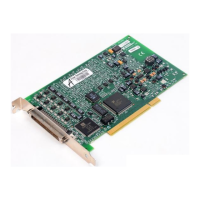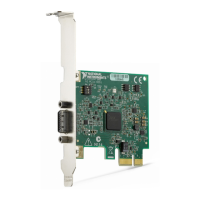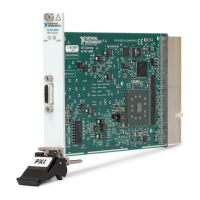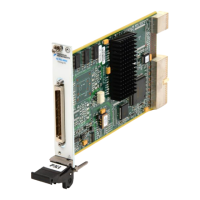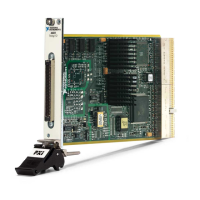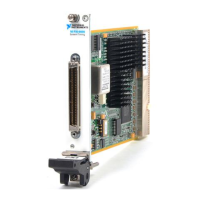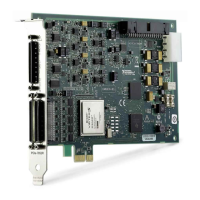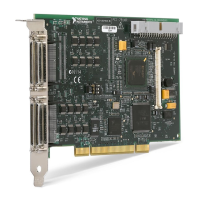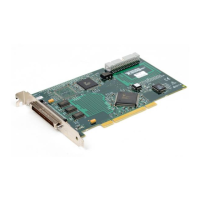Chapter 2 Hardware Overview of the NI 78xxR
R Series Intelligent DAQ User Manual 2-10 ni.com
Differential Connection Considerations (DIFF Input Mode)
In DIFF input mode, the NI 783xR/784xR/785xR measures the difference
between the positive and negative inputs. DIFF input mode is ideal for
measuring ground-referenced signals from other devices. When using
DIFF input mode, the input signal connects to the positive input of the
instrumentation amplifier and its reference signal, or return, connects to the
negative input of the instrumentation amplifier.
Use differential input connections for any channel that meets any of the
following conditions:
• The input signal is low level (less than 1 V).
• The leads connecting the signal to the NI 783xR/784xR/785xR are
greater than 3 m (10 ft).
• The input signal requires a separate ground-reference point or return
signal.
• The signal leads travel through noisy environments.
Differential signal connections reduce noise pickup and increase
common-mode noise rejection. Differential signal connections also
allow input signals to float within the common-mode limits of the
instrumentation amplifier.
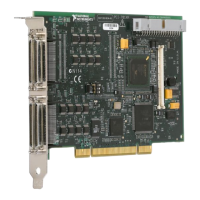
